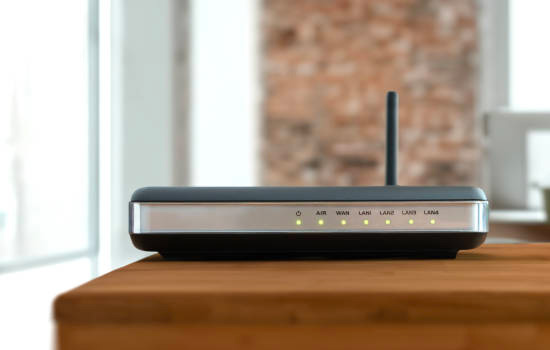Over the last decade or so, digitally based communications has become the dominant communications medium. It started with Voice over IP (“VoIP”) replacing the terrestrial fixed-line PSTN networks, and latterly with instant messaging over the Internet the default means of inter-personal communications. VoIP is now a mature technology, routinely deployed in business to gain benefits in costs and functionality.
What is VoIP and what are its Benefits?

VoIP (Voice over Internet Protocol) is a technology that allows voice communication over the internet. It uses a digital exchange and communications to carry voice and increasingly video conversations between individuals and groups. locally, remotely, and internationally. It can also be used by smart devices, with remote access to corporate phone systems.
The benefits allow small enterprises to appear large by providing services usually associated with large organisations, and large by providing a level of service more commonly associated with small ones. Cost benefits are principally based around cost reductions, achieved by moving to toll-free calls carried on the Internet, rather than charged calls over the public service. The reductions can be particularly substantial if the organisation has lots of regional and international calls.
A final benefit is that of security. With VoIP Encryption, all VoIP traffic is encrypted, preventing any hacker using misdirected or hacked call information.
VoIP Terminology for the Beginner
VoIP uses terminology that, while describing common concepts, can be highly technical. This can make it difficult for non-specialists to compare the many VoIP offerings and select the most appropriate for their business.
Here are, in no specific order, 10 VoIP terminology words that beginners should know:
IP Address

An IP address is a unique numerical label assigned to each device connected to a computer network. In VoIP, IP addresses are used to identify and route voice data packets over the internet.
Codec

Codecs (Coder-Decoder) are software or hardware components that compress and decompress audio and video data. Codecs are crucial in VoIP to optimize bandwidth usage and ensure high-quality voice transmission. There are different Codecs for different types of multi-media data, particularly video content. It is vital to ensure that your VoIP installation supports the Codecs you need.
Bandwidth

Bandwidth refers to the capacity of a network connection to transmit data. One absolute must in VoIP is that network traffic arrives at the destination in the correct order to prevent incomplete and garbled speech. As a result, sufficient bandwidth is essential for clear and uninterrupted voice communication.
Packet Loss


Over the last decade or so, digitally based communications has become the dominant communications medium. It started with Voice over IP (“VoIP”) replacing the terrestrial fixed-line PSTN networks, and latterly with instant messaging over the Internet the default means of inter-personal communications. VoIP is now a mature technology, routinely deployed in business to gain benefits in costs and functionality.
What is VoIP and what are its Benefits?

VoIP (Voice over Internet Protocol) is a technology that allows voice communication over the internet. It uses a digital exchange and communications to carry voice and increasingly video conversations between individuals and groups. locally, remotely, and internationally. It can also be used by smart devices, with remote access to corporate phone systems.
The benefits allow small enterprises to appear large by providing services usually associated with large organisations, and large by providing a level of service more commonly associated with small ones. Cost benefits are principally based around cost reductions, achieved by moving to toll-free calls carried on the Internet, rather than charged calls over the public service. The reductions can be particularly substantial if the organisation has lots of regional and international calls.
A final benefit is that of security. With VoIP Encryption, all VoIP traffic is encrypted, preventing any hacker using misdirected or hacked call information.
VoIP Terminology for the Beginner
VoIP uses terminology that, while describing common concepts, can be highly technical. This can make it difficult for non-specialists to compare the many VoIP offerings and select the most appropriate for their business.
Here are, in no specific order, 10 VoIP terminology words that beginners should know:
IP Address

An IP address is a unique numerical label assigned to each device connected to a computer network. In VoIP, IP addresses are used to identify and route voice data packets over the internet.
Codec

Codecs (Coder-Decoder) are software or hardware components that compress and decompress audio and video data. Codecs are crucial in VoIP to optimize bandwidth usage and ensure high-quality voice transmission. There are different Codecs for different types of multi-media data, particularly video content. It is vital to ensure that your VoIP installation supports the Codecs you need.
Bandwidth

Bandwidth refers to the capacity of a network connection to transmit data. One absolute must in VoIP is that network traffic arrives at the destination in the correct order to prevent incomplete and garbled speech. As a result, sufficient bandwidth is essential for clear and uninterrupted voice communication.
Packet Loss

Packet loss occurs when data packets transmitted over a network do not reach their destination. In VoIP, excessive packet loss can result in degraded call quality. Again, speech will be garbled and difficult, if not impossible, to understand.
Latency

Latency is the delay in data transmission over a network. High latency can lead to communication problems in VoIP, such as delays or echo during conversations.
Router

A router is a networking device that directs data traffic between different networks, such as a home network and the internet. VoIP phones and devices often connect to routers to access the internet. PBX (Private Branch Exchange)
Just like with the public phone network and existing landlines, a PBX is a telephone system used within an organization to manage internal and external calls. VoIP PBX systems use the internet to transmit calls, reducing costs compared to traditional PBX systems. This is of particular benefit for regional and international calls.
SIP (Session Initiation Protocol)

SIP is a protocol used for initiating, maintaining, modifying, and terminating real-time sessions involving video, voice, messaging, and other communications applications. It’s a common protocol in VoIP.
It allows organisations to use VoIP with a corporate WiFi network to allow mobile users to use smart devices in exactly the same way as desktop phone sets, but from any location in range. They can send and receive calls from their smart phone using their extension numbers on the VoIP PBX. No more hiding anymore when away from the desk.
QoS (Quality of Service)

QoS is a portmanteau term referring to the set of technologies and software mechanisms that ensure the delivery of high-quality service over a network. In VoIP, QoS settings help prioritize voice traffic to maintain call quality, even in congested networks. QoS generally needs configuration of the software and hardware making up the corporate network outside the VoIP domain.
VoIP Encryption

The incidence of hacking and malware attacks on corporate networks and their applications has increased greatly in recent times. VoIP is not immune. If a hacker can overhear corporate phone conversations, they can attack the organisation.
The answer is to use VoIP Encryption to encrypt VoIP data as it moves across the Internet. Data packets are encrypted as they leave and are decoded by the receiver as they arrive. Often the encryption is defined during the SIP process and changes for each call.
Understanding these fundamental VoIP terms will help beginners navigate the world of internet-based voice communication more effectively.



Leave a Reply